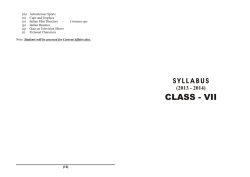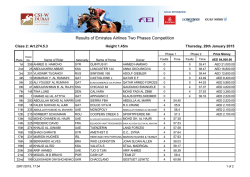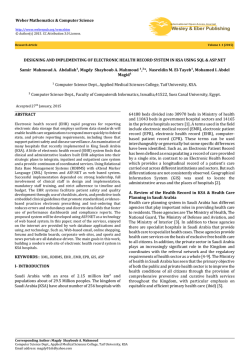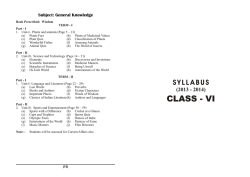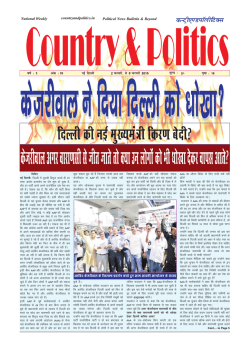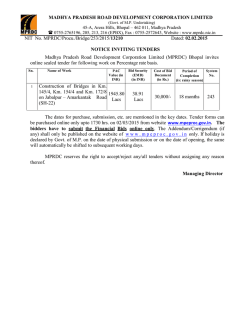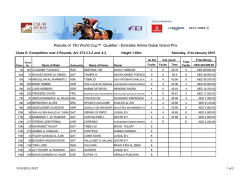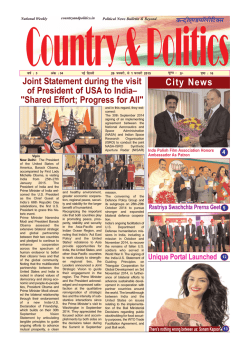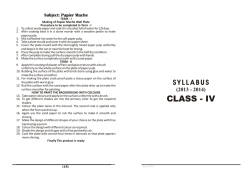
Class 6th
SYLLABUS
CLASS VI
Session 2013-14
Nazir//TNG
Subject: English
Book Prescribed:
Grammar:
Pearls-An Integrated Course in English
Go Grammar by F K Publications
UNIT I
WILL THE PONDAS DISAPPEAR
Reading Comprehension: Factual, Inferential & reflective.
Listening Skill:
Listening and responding to answer the questions.
Speaking Skill:
Pronunciation-words, intonation (Mixes Sentences)
Practicing dialogue (importance of wild life)
Poem:
The Dear And The Hunter
(Summarization, Rhyme Scheme)
Grammar:
Nouns & its types, Possessive Nouns, Singular & Plural,
Gender, Compound Nouns & Unseen passage
UNIT - II
OUR NEW AQUARIUM
Reading Comprehension: Factual, Inferential & reflective.
Listening Skill:
Listening and note making.
Speaking Skill:
Pronunciation-words, intonation (Declarative Sentences)
Poem:
I Do Not Want To Be A Fish
(Rhyme Scheme, Central Idea)
Grammar:
Pronoun & its types, Personal , Reflexive, Interrogative ,
Relative , Demonstrative , Indefinite pronouns, Distributive
pronouns Unseen passage (Vocabulary, Comprehension,
Grammar)
TERM -1
ONE EVENING IN ILLINOIS
Reading Comprehension: Factual, Inferential & reflective.
Vocabulary:
Contextual use of words, Making dictionary entries,
Onomatopoeic words
Listening Skill:
Listening to make a tabular and flow chart format for note
making
Speaking Skill:
Intonation (Interrogative Sentences, Reading a Story)
Writing Skills:
Paragraph Writing, Writing an informal letter
Poem:
An Earthquake
(Rhyme Scheme, Summarization/Central Idea)
Grammar:
Adjective & its types, Degrees of comparison, Formation
of adjectives, Verbs, Subject & verb agreement, Regular &
Irregular verbs, Models, Unseen passage
UNIT - III
THE SHINY DOLLOAR
Reading Comprehension: Factual, Inferential & reflective.
Vocabulary:
Use of prefixes & suffixes, Synonyms
Listening Skill:
Listening and responding to answer the questions.
Speaking Skill:
Describing pictures, Agreeing and disagreeing
Poem:
Who Are You?
Rhyme Scheme, Summarization, Imagery (Visual)
Grammar:
Adverbs and its kinds, Making sentences Antonyms, Cont. On next page
(1)
3. How panchayati raj works-gram panchayat, panchayat samiti, zilla parishad
Geography (The motions of the earth)
Sub-topics:- 1. Rotation of the Earth
2. Effects of the earth's rotation
3.Day and night 4. Revolution 5. Effects of the earth's revolution
6. Varying lengths of day &night 7. The changing season 8. Equisoxes
9. The four seasons
10.Leap year
UNIT-III
History (The Early State-Janapadas to Mahajanapadas)
Sub-Topics:1. What is a State? 2. Monarchies &Republics
3.Janapadas to Mahajanapadas
4. Life in the Mahajanpadas- (Growth of new crafts, growth of trade and
formation of guilds, growth of urban settlement, imposition of taxes)
Civics (Government of Urban areas)
Sub-Topics:- 1. The municipal corporation-functions & sources of income
2. The municipal council-functions & sources of income
3. Nagar Panchayats
4. Advantages of Local Self Govt.
Geography (Major land forms of the Earth)
Sub-Topics:- 1. Internal forces 2. External forces 4. Landforms & the people
3. Different types of landforms- mountains, plateau, plains
TERM 2ND
1) History (Contact with Distant Lands)
Sub-Topics:- 1. Contact through trade
2. Contact with Greeks & Romans
3. Contacts with South East Asia
4. The silk route
5. Conquerors from Distant lands-the Indo-Greeks or the Bactrian Greeks,
the Sakas, the parthian, the kushanas
6. Contact through the spread of religion-the spread of Buddhism to Central Asia
2) (India between the 4th and 7th centuries AD)
Sub-Topics:1. The Guptas- Sources of information, Gupta kings,;life under the Guptasadministration ,society, trade, religion
2. Harshavardhana (AD606-647)- Administration, occupation& trade, religion,
art &culture
3. The kingdoms of the Decan -the Chalukyas, thePallavas
Civics (District Administration)
Sub-Topics:- 1. Districts of India 2. Administration of the Districts
3. District collector-power/function
4. The superintendent of police
5. Deputy conservator of forests
6. (Project work)
Geography 1) (of our country India)
Sub-Topics:1. Location 2. India neighbours 3. Political &administrative divisions 4. Map work
2) (The physical division of India)
Sub-Topics:-1. The great northern Mountains
2. The northern plains
3. The peninsular plateau 4. The thar desert
5. The coastal plains
6. The islands of India
7. Map work
(14)
Subject: Social Studies
Book Prescribed:
1) History
(Getting Ahead in Social Science with CCE 6 by 'Hemalatha Seshadri')
2) Civics
(Getting Ahead in Social Science with CCE 6 by 'Hemalatha Seshadri')
3) Geography (Getting Ahead in Social Science with CCE 6 by'Mahalakshmi Ramjee')
UNIT 1ST
History(Where, When &How)
Sub-Topics:- 1.What is history and why do we learn it 2. History and prehistory
3. Time and date in history
4. The geographical framework
5. Sources for the study of history
Civics (Understanding Government)
Sub Topics:- 1.The meaning of Government 2. The need for Government
3. Various forms of Government
4. Features of Democracy
Geography (Latitudes and Longitudes-locating places on the globe)
Sub-Topics:- 1. Latitudes
2. Temperature zones of the earth
3. Longitudes
4. Time zones of the world
UNIT 2ND
History (Of Early Humans-Hunters and Gatherers)
Sub Topics:1. Human Evolution(from food gatherer to farmer)
2. Stone Age(Divisions);old stone age or Palaeolithic age, the middle stone age or
Mesolithic age, the new stone age or the Neolithic age
3. Chalcolithic age
Civics (Elements of Democracy)
Sub-Topics:1. Participation
2. Accountability
3.Conflict Resolution
4. Concern for equality & justice
Geography (Maps)
Sub-Topics:1. What are Maps?
2. Classification of maps
3. The components of a map
4. A sketch and a plan
TERM IST
History (And then, the First cities)
Sub-Topics:1. What is civilization?
2. Urbanization of cities
3. The Indus valley civilization-(Town planning, Nature of
Government, cultivation, clothes, scripts, metallurgy, pottery, art and
craft, seals, weights and measures, religion, trade, the end of Indus
civilisation)
Civics (Panchayati Raj-local Government of rural area)
Sub-Topics:1. Local Self Government-Rural and urban
2. Panchayati Raj-history of panchayati raj, importance of panchayati raj
Cont. on next page
(13)
Unseen passage
Term-II
A GLASS OF MILK
Reading Comprehension: Factual, Inferential & Reflective.
Listening Skill:
Listening and following directions.
Speaking Skill:
Decision making, Describing People
Writing Skill:
Writing a story (reporting to a situation)
Poem:
Kindness
Rhyme Scheme, Summarization/Central Idea
Grammar:
Tenses & its kinds, Direct &Indirect speech, Letter
writing (Formal), Essay (Descriptive),Unseen passage
Subject: Mathematics
Book Prescribed: Go Maths - 6
Unit - I
(Knowing our Numbers)
Ascending & Descending order, Place-value & face value, Expanding form,
Large No’s, Comparison of No’s, Estimation, Roman Numerals
(Playing With Numbers)
Operation of No’s, Factors & Multiple, Types of No’s, Tests of Divisibility,
HCF & LCM.(Activities according to lab. Manual)
Unit - II
(Whole Numbers)
Properties of whole numbers, Properties of Division.
(Negative Numbers and Integers)
Negative of a Negative Integer, Absolute value of an Integer, Operations of
Integers. (Activities according to lab. Manual)
Term - I
(Decimals)
Fractions as decimals, Decimals in expanded form, Equivalent decimals,
Like & unlike decimals, Comparing decimals.
(Basic Geometrical Concepts)
Point, Line, Line segment, Collinear points, Angles, Triangles, Qud, Circles
(Elementary Shapes)
Pair of lines, Triangles, Quad their types, Polygons, 3D figures (Activities
according to lab. Manual)
Unit - III
(Fractions)
Fraction as a part of whole, types of fraction, Simplest form of a fraction,
Operation an fraction.
(Geometrical Constructions)
Line segments, Construction of line segment, Perpendiculars, Circles Angles,
& Angle bisectors.
(Introduction to Algebraic)
Fundamental operations of literal numbers, Algebraic expression.(Activities
according to lab. Manual)
Term -II
(Algebraic equations)
(2)
What is an equation?, Method of solving equation.
(Perimeter & Area)
Perimeter & its formula regarding various shapes, Area & its formula
regarding various shapes, Comparison between Areas & perimeter.
(Ratio & Proportion)
Comparison of two ratios, Proportions, Unitary method.
(Data Handling)
Data, Organization of data representation, Bar graph, Pictograph. (Activities
according to lab. Manual)
Subject: Science
Book Prescribed: ICSE by Deb Mukherji Publisher: Bharati Bhawan (P&D)
Unit - I
1. (Introduction)
Science; Life science; material sciences; physics- Law of physics; pleasures
of physics.
2. (Measurement)
Measuring a physical quantity; units; multiples and sub-multiples of metric.
Units; measurement of length, mass, area, volume, time, estimating time
taken in common daily activities; measurement of temperature; sales on
thermometers; types of thermometers; Approximation; accuracy in
measurement; standard weights and measure and average.
Unit - II
(Force and Pressure)
Force; Effects of forces; Types of forces; Measurement of force; Resultant
force; Pressure; factors on which pressure depends and applications of
pressure.
Term - I
(Work & Energy)
Work; work done; examples of W.D from daily life; work=force × distance
moved (in the direction of the force). Energy; Different forms of e n e r g y kinetic, potential, chemical, muscular, electrical, magnetic, Heat; Light, and
sound; Energy transformation; Identification of such transformation; sources
of energy-food, fossil, fuels, biomass, hydro, wind, thermal, and solar;
work-energy relationship.
Unit - III
(Machines)
Machines, Functions of machines, the lever-identififying load, effort and
fulcrum in the three classes of levers; the inclined plane and the screw; the
pulley; wheel and axle maintenance and care of machines.
Term - II
(Magnetism)
Magnet, natural & man made magnets; permanent & temporary magnets;
magnetic & non-magnetic materials; poles of a magnet; properties of a
magnetic; storing magnets; electromagnetic and uses of electromagnets.
(3)
Unit-III
ikB%
1]
if{k;ksa dh izokl ;k=k 2] ifFkd ls ¼dfork½
3]
vfLFknku A
4] pUnz’ks[kj osdaVjeu
vH;kl iqfLrdk%15]16]18]16
O;kdj.k% fdz;k fo’ks"k.k] i;kZ;okph opu !
izR;sd ikB dk Jqrys[k lLoj okpurFkk lqys[k ys[ku A
1- izR;sd i{kh ekSle ds vuqlkj viuk ;k=k izkjaHk djrs gSa blds ckjs tkudkjh
nh tk,xh rFkk vyx& vyx if{k;ksa ds fp= ,d= dj pkVZ ij fpidkus ds
fy, fn;s tk,axs A
2- izR;sd eqlkfQj viuk y{; dks ikus ds fy, ,d jkLrk viukrk gS bl ij
ppkZ djds vius y{; ds ckjs ,d ifjPNsn fy[kok;k tk,xk
3- pUnz’ks[kj osadVjeu ds thouh ij fopkj foe’kZ fd;k tk,xk rFkk ,d
vuqPNsn fy[kok;k t,xk A
Term-II
ikB%
1]
D;ksa ;g vkx cq>kvksxs \ 2] egkjk.kk dk opu
3]
ohj ckyd
4] vkLVªsfy;k dk ,d fofp= izk.kh A
vH;kl iqfLrdk% 28]26]20]22
O;kdj.k% fØ;k vkSj dky fo’ks"k.k] vusd ’kCnksa ds fy, ,d
’kCn] eqgkojs & 11&22 !
fuca/k & foKky ds peRdkj] iznw"k.k !
i=& dksbZ Hkh futh i= A
izR;sd ikB dk Jqrys[k lLoj okpurFkk lqys[k ys[ku A
1- ’kgj ds/kuh O;fDr xk¡o ds xjhc O;fDr;ksa ij dSls vR;kpkj djrs gS bl ij
izdk’k Mkyk tk,xk A
2- vdcj vkSj egkjk.kk izrki ds chp dk vkdze.k ds ckjs fo|kfFkZ;ksa dks
tkudkjh nh t,xh A
3- ^ekyksth* uked ckyd dh ohjrh dk ltho fp=.k crk;k tk,xk fd dSls
viuh chekj ek¡¡ dh lgk;rk fd;s gSa rks mlds ckjs ,d vuqPNsn fy[kus fn;k
tk,xk A
4- daxk: ,d fofp= izk.kh gS og vkLVs~fy;k esa ik;k tkrk gS mlds ’kjhj ds
cukoV ds ckjs vkil esa tkudkjh nh tk,xh A
(12)
(CHEMISTRY)
Subject: Hindi
Book Prescribed:
lqqxa/k Hkkx &6
Publisher:
th jke cqDl
Unit-I
ikB% 1] ,d cus ge usd cus ge] ¼dfork½ 2]cjXkn jks jgk gS] 3] x<+h ds yky
vH;kl iqfLrdk 1]2]3
O;kdj.k% laKk] i;kZ;okph ’kCn vkSj opu A
izR;sd ikB dk Jqrys[k lLoj okpurFkk lqys[k ys[ku A
1- laxBu vkSj bZekunkjh ds chp dk lac/k fo|kfFkZ lks dks crk;k tk,xk A
2- cjxn isM+ dh ’fhry Nk;k esa leh izk.kh feytqy dj fcuk Hksn&Hkko ds dSls
thou fuokZg djrs gSa tkudkjh nh tk,xh rFkk fo/kkfFkZ;ksa ls fofHkUu izdkj ds
i’kq & if{k;ksa dk fp= ,d= dj pkVZ rS;kj djk;k tk,xk-
Unit - I
(States of Matter)
Matter has 3 states, General properties of solids, General properties of liquidswith various examples, General properties of gases, Comparisons of
properties
of various states of matter, Table 1.1, Change in state. Activities
related the
chapter will be shown.
Unit - II
(Changes Around Us)
Types of changes, Reversible & irreversible changes, Periodic & non periodic
changes, Desirable & undesirable changes, Physical & chemical changes with
examples, Rusting, Photosynthesis, Digestion, Cooking of food, Differences
between a physical & chemical change, Examples related the chapter.
Term - I
Unit -II
ikB% 1] izk.kh ogh izk.kh gS ¼dfork½ 2]lkglh cuks A 3] lkFkh tho tUrq
vH;kl iqfLrdk% 4]6]7]8 !
O;kdj.k% dkjd] foykse ’kCn eqgkojs 1&10 rd A
izR;sd ikB dk Jqrys[k lLoj okpurFkk lqys[k ys[ku A
1- izR;sd thfor izkf.k;ksa dks lalkj dh izxfr ds fy, vkRe&cfynku ds fy,
rS;kj jguk tkfg, A blds ckjs Nk=kvksa dks tkudkjh nh tk,xh A
2- vaxzsth ’kkludky ds ckjs fopkj&foe’Zk fd;k tk,xk A
3- fofHkUu izdkj ds tho&tUrqvksa ds lkFk gq, vuqHkoksa ds ckjs ,d vuqPNsn
fy[kok;k tk,xk A
(Pure-Substance & Mixtures)
Characteristics of a mixture, Types of mixtures & their examples, Methods of
separating the constituents of mixtures, Alinnoning, Hand picking, Sieving,
Magnetic separation, Sedimentation & Decoration, Filtration, Activities
related the chapter will be shown.
Unit - III
(Air)
Composition of air, All living things require air, The role of air in burning fuels
Term - II
(Water)
The sources of water, The states of water, The water of cycle, Water is essential
for
life, Water as a solvent, Obtaining the solute from a solution. Pollution of water,
Causes and Control, water borne diseases, Purification of water, Sedimentation,
Decoration, Chlorination, Boiling, Water purifier.
Term-I
ikB% 1] fldanj vkSj lk/kq 2] :dks ugha] >wdks ugh c<+s pyks c<+s pyks ¼dfork½
3] Hkkjr dh ,drk A
vH;kl iqfLrdk% 5] 6] 10
O;kdj.k% fo’ks"k.k] dky vkSj izR;; A
fuc/k% fiz; usrk] thou esa [ksyksa dk egPo A Ik=% dksbZ Hkh futh i= A
izR;sd ikB dk Jqrys[k lLoj okpurFkk lqys[k ys[ku A
1- fldanj vkSj lk/kq ds chPk gq, okrZkyki ds ckjs fo/kkfFkZ;ksa ds lkFk ppkZ dh
tk,xkh A
2- vPNkbZ vkSj cqjkZb ds chPk vUrj crk;k tk,xk rFkk nksusak ds Ckkjs ,d&,d
vuqPNsn fy[kok;k tk,xk A
3- Hkkjr dh ,drk ds ckjs ppkZ dh tk,xh A
(11)
(Nature of Matter)
Elements, Metals & non-metals, Representing an elements with the symbols,
Compounds, Characteristics of chemical combination, Atoms & molecules, How
atom is represented, Formula of a compound Table 3.2, Activities related the chapter
will be shown.
(Rocks, Soil and Minerals)
Rocks and its types, Minerals, Uses of minerals, Fossil fuels.
(BIOLOGY)
Book Prescribed: ICSE-R.N.Bhattacharjee
Unit - I
(Health & Hygiene)
Conditions for good health, food & health, types of nutrients, balanced diet,
eating habits & health, personal hygiene, (care of eyes & hair care), clean
surroundings, community hygiene, communicable diseases.
Unit - II
1. (The Living World)
Characteristics of living beings (made of cells, need food, respire, throw out waste,
respond to stimuli, living beings move, reproduce & life cycle) Plants & animals.
2. (Classification of the living World)
Classification & its importance, Plan of classification & naming of organisms.
(4)
Term - I
1. (Classification of animals)
Invertebrates (protozoans, worms, Molluscs, Arthopoda), Vertebrates (Pisces,
Amphibia, Reptilia, Aves Mammalia).
2. (Classification of Plants)
Cryptogams (Algae, fungi, Mosses ferns), Phanerogams (gymnosperms,
angiosperms), other classification (life cycle)
Unit -III
(Our environment)
The earth conditions needed for life, components of the environment (Abiotic &
Biotic, Cultural) interactions between various components.
Term-II
1. (Our Environment)
Some useful plants(fibres, paper & timber, medicinal plants) Micro-organisms, some
useful animals.
2. (The Structure & functions of plant parts)
The Root (tap root & fibrous root), functions of the root, modifications of the root, T h e
stem- functions of the stem, modifications of the stem. The leaffunctions of the leaf, types, arrangement of leaves, modification of the leaf. The flower
(parts of a flower), pollination, fertilization. The fruit, the seed (structure & seed
dispersal).
Subject: Art
Book Prescribed:
TERM - I
1.
Colours and its formations
2.
Basic colours, Secondary colours, Territory colours
3.
Warm and Cool colours, Contrast colours in basic.
4.
Shapes designs.
5.
Contrast colours in flowers.
6.
Chess board with contrast (black & white)
TERM - II
1.
Application of tones and use in geometric shaped designs.
2.
Use of Black & White colours for making dark and light colours tones..
3.
Use of colour in flowers design use of colours tones in geometric shaped
design.
4.
Village Scene.
5.
Land Scape.
Subject: General Knowledge
Subject: Moral Science
Book Prescribed :Prescribed by :-
1)
2)
3)
4)
1)
2)
3)
4)
Know For Sure (G.K)
Siddhartha Basu
TERM - I
Topic
The Natural WorldThings Around MeScience and Technology
Number Skill
Page No
Pg No 8,9,22,24,34,54,60
Pg No 10,12,26,59,76
Pg No 20,27,28,41,42,58,70,71
Pg No 29,64,78
TERM - II
Language and Literature,
Legends and MythsArt and Music
Sports
The World Around Us-
Book Prescribed :
TERM - I
Hope For Life
Name of the chapter
1.
2.
3.
4.
5.
Devotion of God
Happiness: The Greatest Requirement of Life.
Etiquette and Manners
Concentration
Positive Thinking
1.
2.
3.
4.
5.
6.
Consideration
Gratitude
Compassion
Gentleness Helps
Believe in Yourself
Learn from failures
TERM - II
Pg No 16,17,18,36,44,46,47,63,72,74
Pg No 25,39,40,45,52,56,80
Pg No 15,38,50
Pg No 7,14,23,32,37,48,55,66,68,77,82
(5)
(10)
Subject:- Kashmiri
Book Prescribed: State Board of School Education
Subject: Computer
Book prescribed:
I.T.Tools Plus
Term-I
1.
Computer languages.
2.
More on Windows.
3.
More one PowerPoint.
4.
Enlivening A Presentation.
5.
Introduction to Ms-Excel.
Project Work: Pg. No.-126,127,128
Term-II
1.
Editing A Worksheet.
2.
Log on to Flash.
3.
Working in Flash.
4.
Introduction to Q-BASIC
5.
Browsing Internet.
Project Work: Pg. No.-128,130
(9)
(6)
Subject:- Urdu
Cont on next page
(7)
(8)
© Copyright 2025
